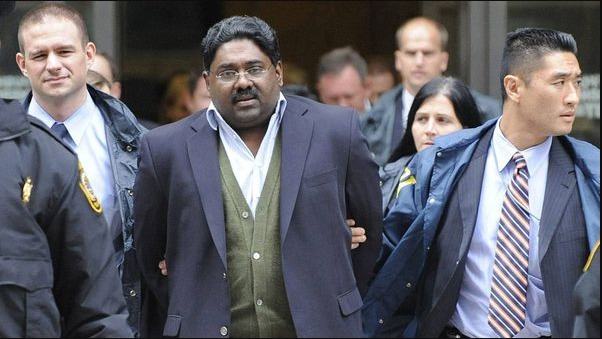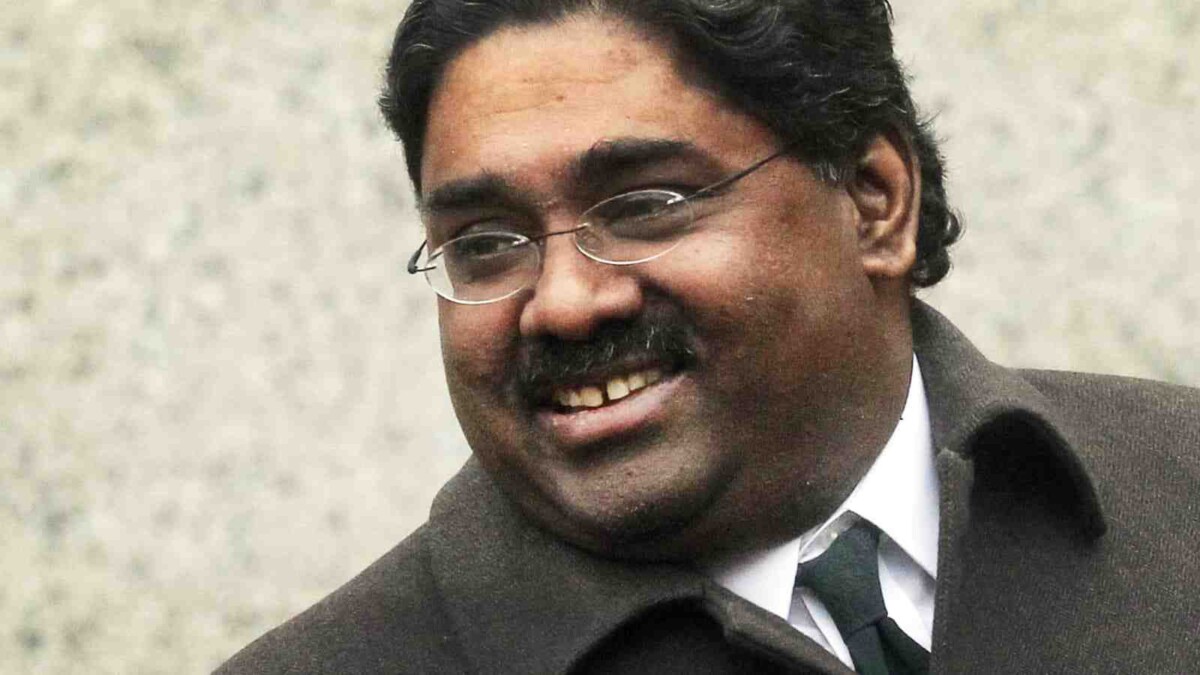Introduction
The Raj Rajaratnam insider trading scandal rocked Wall Street and the entire financial world in 2011. It was one of the biggest cases of its kind in history. The federal government charged Billionaire hedge fund manager Raj Rajaratnam with conspiracy and securities fraud. So who exactly was Raj Rajaratnam? How did he get involved with the insider trading scandal? How did the case against him unfold? Find out everything you need to know about the high-profile insider trading scandal. That put both Rajaratnam and his Galleon Group hedge fund at the center of controversy.
About Raj Rajaratnam
Raj Rajaratnam is a Sri Lankan-born American businessman. He had a 30-year career as an investor and hedge fund manager. He was convicted of insider trading and sentenced to 11 years in prison. His sentencing was considered by many to be justice served. However, whether or not his sentence is appropriate depends on how one defines insider trading. And what one considers fair punishment for this crime.
First, insiders are people who have access to inside information. That can impact the price of stocks, bonds, options, or other securities. An example of this will be if an employee of Microsoft learns that they are working on a new project. And then tells their neighbor who works at IBM about it before it becomes public knowledge. This would allow IBM stock prices to rise before Microsoft announced anything publicly. Alternatively, someone may also use non-public information to buy or sell stocks for themselves.
Types of Insider Trading
Second, there are two types of insider trading: legal and illegal. The Securities Exchange Act defines legal insider trading as buying or selling securities. Based on material non-public information from sources such as employees. With whom they have a pre-existing relationship (e.g., supervisors), directors, officers, lawyers, accountants affiliated with the company, customers, etc.). Illegal insider trading means any other type of trade made with material non-public information (e.g., stealing documents containing confidential company data).
And finally, insider trading is a white-collar crime. Typically, the government prosecutes and fines those who are caught for tens of millions of dollars. Considered a victimless crime, it incurs no direct losses to anyone except for shareholders. Additionally, not everyone agrees that illegal actions were committed at all in the case of this crime. They are, therefore, deserving of jail time or fines.
2009
In 2009, Raj Rajaratnam was arrested for insider trading. He had made 60 million dollars illegally by using information from a variety of sources, such as investment bankers, board members, and directors. The government has decided to charge him with 14 counts of securities fraud. And conspiracy and put him on trial. He set off a scandal in 2008 when allegations emerged that he traded illicitly on confidential information.
Many felt he deserved to go to jail because he stole money from innocent investors. However others believed that it should not be criminalized. He did nothing more than make investments that weren’t available to everyone else. Despite the need for fines and penalties, some believed that Rajatarnam should be allowed to go home without being placed behind bars.
And instead, just paid back the money he stole from innocent investors. Regardless of how others feel about the matter, it seems clear that Rajatarnam will spend over ten years in federal prison for his role in the insider trading scandal.

The Galleon Group
They convicted Raj Rajaratnam for trading stocks based on information he obtained from corporate insiders. The Galleon Group he had started after leaving McKinsey & Co. It was a large hedge fund with some $7 billion under management. The funds were largely managed by his former employees at Galleon, many of whom were also convicted of insider trading. Rajat Gupta, one of three managing directors at McKinsey and an ex-CEO of Goldman Sachs and Procter & Gamble pleaded guilty to passing inside information to Rajaratnam. Rajat Gupta provided an example of the kind of person who could be an informant or provide information: It could be anybody you know very well.
However, The Wall Street Journal suggests there is another possibility. Which is that information may have been flowing through hedge funds or to hedge funds (such as those run by Rajaratnam), which then traded on it. This would put people at risk who are not close friends. But who still have connections to corporate executives or insiders and who may trade based on their privileged access to insider information. It is unclear how far this flow of information went. Whether traders knew they were dealing with illegal tips or simply looked the other way because they benefited financially.
At any rate, these new allegations show that companies cannot control all the channels through which confidential data can leak. In order to reduce the likelihood of illicit trading based on inside information. Corporations should restrict their use of outside consultants and other advisors. It is According to Professor Joel Seligman, director of the University of Rochester’s Graduate School of Management. Companies need to think about whether they want advice from outsiders if it creates a potential conflict.
However, Professor Seligman advises that firms continue to get advice externally. Because a great deal is dependent on getting good consulting advice. Before making major decisions about such things as capital investments. Thus, organizations must balance protecting themselves against insider trading and retaining valuable outside counsel.
In sum, insider trading and the tipping of insider information is a problem that has received a lot of attention lately. However, much remains to be learned about the widespread nature of these practices and the methods by which they are carried out.
A focus on enforcement alone will not deter those who would engage in illegal trading based on insider information. In order to reduce these activities, organizations need to reconsider how they handle information. They also need to continue to work with law enforcement officials. As investigations go forward, prosecutions can act as an effective deterrent against future violations of securities laws.
Read More: The Martha Stewart insider trading controversy erupted in the early 2000s. Learn about what happened and how it impacted Martha Stewart’s career.
The Insider Trading Scandal
Insider trading is when a person who has information about a company buys or sells stocks based on that information. That insider then makes money off of the shares because they were privy to information that most others were not aware of. In 2009, an insider trading scandal involving Galleon hedge fund manager Raj Rajaratnam implicated more than twenty people.
The scheme involved insiders passing confidential information to Raj via phone or email, and he would then execute trades on their behalf with his own account. Law enforcement agencies eventually cracked the scheme, and wiretaps showed that Raj had been providing insider tips since 2003.
They built the prosecutors’ case against him on two types of evidence. The first method involved wiretaps, allowing them to record conversations in which Raj was disclosing material non-public information obtained from his sources within companies to his friends, family, and co-workers. The second type of evidence came from inside knowledge. Through documents such as emails, they could prove that Raj had received private information at certain points before he made a trade.
The criminal charges filed against Mr. Rajaratnam stemmed from what some are calling the biggest insider trading investigation ever conducted. What may have once seemed like legally made high profits are now seen as illicit gains taken illegally, undermining the integrity of our markets and eroding trust in American capitalism itself.
In a press conference, Attorney General Eric Holder, whose department brought the case against Mr. Rajaratnam and his alleged co-conspirators, said that the guilty plea of [Mr.] Rajaratnam should be a clear warning to others who trade on inside information. According to U.S. District Judge Richard Holwell, who presided over both cases, there were two reasons for bringing insider trading cases: First, as a deterrent to other potential wrongdoers – that is what makes people think twice before engaging in insider trading; second is punishing wrongdoers so they know they can’t get away with it.
Rajaratnam’s Role in the Scandal
Raj Rajaratnam’s role in the scandal involved his company trading on insider information that they found out through their connections in the companies they invested in. Multiple groups of people within the group would visit different investment firms and gather information about companies that were going to perform well before it became public knowledge.This allowed them to invest in those companies and make a lot more money than they would have originally. Some of the most high-profile cases where Rajaratnam and his team used this information came with Intel, AMD, and IBM.
His role was very important to help his company make a lot of money and get them into situations where they could come out on top. Without him and people like him, insider trading wouldn’t be as popular as it is now because there would be no one who knew about anything before it came out.
The F.B.I. has taken a lot of time to build up its case against Rajaratnam through multiple searches for any evidence that can link him to insider trading at all. They’ve even gone so far as to wiretap conversations between him and other people related to various securities trades. They took this long because they wanted to be sure that they had enough solid evidence that he actually did commit these crimes. If he walks away without being charged, it could set a precedent for future cases of insider trading.

Raj was able to find all of these different sources and build up a really good network, which made his company able to trade on insider information before anyone else. That is why his role was so important. Without him, no one would have had any access to insider information because it would be impossible for them to get as many sources as he did. He also worked closely with the others in his firm, so if he didn’t do his job, then nobody else would have been able to step up either. Because of his work, the whole thing fell apart.
The key to all of his success was getting people inside various investment firms to work with him, which is where he got all of his insider information from. These people didn’t know what they were doing was illegal and because of that, Raj and his company were able to make a lot more money than anyone else.
The Aftermath of the Scandal
Insider trading happens when one individual shares insider information about a company with another. This is illegal and unethical because of the unfair advantage it gives to those who have this knowledge. Companies are aware of this, and they put safeguards in place to make sure that employees don’t share sensitive information with outsiders. A scandal erupted on Wall Street in 2009 when authorities arrested hedge fund manager Raj Rajaratnam on charges of insider trading. This became known as the Galleon Group case, named for his fund.
People now view what may have once seemed like legally earned high profits as illicit gains taken illegally, undermining the integrity of our markets and eroding trust in American capitalism itself. This will help ensure the company’s confidentiality and uphold its integrity. It may also be beneficial to establish rules about how much confidential material an employee can review at once before reporting back on what they found out.
This way, if someone tries to manipulate the system by getting their hands on too much sensitive information. Law enforcement will catch them before they have enough time to carry out their plans. When engaged in the unauthorized use of confidential information, people should understand that there are consequences. Under federal law, anyone convicted of violating securities laws can face fines of up to $5 million and sentences of up to 20 years in prison, imposed by authorities.
Make sure that you and your staff are aware of these punishments. However, it is unlikely to convict any employee. Even if not caught, people who commit insider trading may still face serious consequences imposed by law enforcement. For example, an employer could fire someone for committing securities fraud. Or investors might choose to take their business elsewhere after learning about unethical behavior. This could have a devastating impact on a person’s career and finances.
You can read other examples of insider trading here.
Disclaimer: This article and the information contained herein are not intended to be a source of legal advice. We don’t promote any illegal activities such as insider trading or any other crime.

